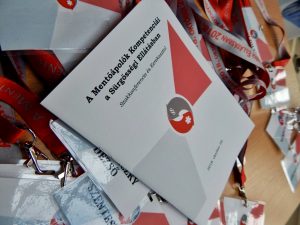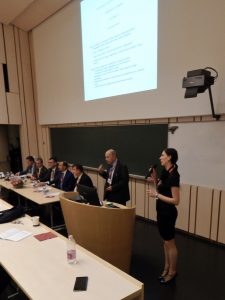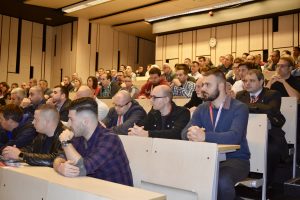„Life is time, time is life.” – this is the motto of emergency department, to which the sound of the ambulance car’s siren is closely related to. With the advancement of medical science,  especially in the aspects of field emergency discipline, the question of limits of the ambulance nurses’ competencies and the tasks that can be given to them safely complying to the challenges of the 21st century is being vocalized more and more frequently.
especially in the aspects of field emergency discipline, the question of limits of the ambulance nurses’ competencies and the tasks that can be given to them safely complying to the challenges of the 21st century is being vocalized more and more frequently.
Among other things, „The Competencies of Ambulance Nurses in Emergency Care” conference and round table talks have focused on answering these questions in late October at the Basic Medical Science Centre as they discussed the power of intervention given to ambulance nurses.
The conference was opened by Prof. Dr. Ildikó Horváth, Secretary of State for Health who has emphasized that healthcare operates well if it is invisible like air. – Until we can breathe, we do not realize it, but from the point of losing breath and getting out of air we suffocate – as Ms. Secretary of State has illustrated it, adding that those who work in emergency care save people, groups of people on a daily basis, but when this community needs help, those need to take actions who have their competency in the matter. The challenges are also opportunities for the professionals, who have attended the conference, to initiate their recommendations, solutions that within a few years could improve the circumstances significantly for the shared joy of patients and health care workers.
needs help, those need to take actions who have their competency in the matter. The challenges are also opportunities for the professionals, who have attended the conference, to initiate their recommendations, solutions that within a few years could improve the circumstances significantly for the shared joy of patients and health care workers.
– I wish that we find solutions that allow ambulance nurses to do their job with gratification proudly. That they can go home with the sense that they work for something they believe in and they can live the joy of saving lives while being appreciated and acknowledged for their devoted work. On my part, I would like to offer a partnership for this cause and I will serve it so that not only our patients receive more of health, but also those who work within healthcare. – these were the thoughts of Ildikó Horváth which established the atmosphere of the conference.
 Ágnes Gresz, the organiser of the event emphasized that to further develop emergency care we need to observe this area of expertise from different aspects. So that beyond medical considerations we also need to evaluate public administration and legal aspects, she also aimed to include the questions related to the training of ambulance nurses. The fundamental goal of the conference was to improve quality assurance along with the safety of patient care, henceforth operating emergency care as a more transparent unit for both patients and providers.
Ágnes Gresz, the organiser of the event emphasized that to further develop emergency care we need to observe this area of expertise from different aspects. So that beyond medical considerations we also need to evaluate public administration and legal aspects, she also aimed to include the questions related to the training of ambulance nurses. The fundamental goal of the conference was to improve quality assurance along with the safety of patient care, henceforth operating emergency care as a more transparent unit for both patients and providers.
The training of ambulance nurses is quite complex due to the fact that they participate in prehospital and hospital care as well which requires the representation of interest for both operative organisational forms are involved in discussions to reach consensus. It was especially exciting to witness the sections that has evaluate these issues from a legal perspective, where the protocols of patient care were also presented according to different scenarios, how different members of the team need to and can proceed. These are extremely complex questions, for in the same time, the legal environment needs to be provided and the practice needs to comply with international guidelines, and the employer also needs to adjust in its own authority according to the standards. The synchronization of these three things generated the most questions and comments.
– The participants could have an insight into such aspects of ambulance nurse competencies with which they cannot meet in their everyday practice – said Ágnes  Gresz. They had the opportunity to personally get to know the legal aspects and public administration characteristics which fundamentally determine the scope of activities for all professions in the field; hence determine the method of work as well. In one hand the audience got to understand why we need these regulations for the optimally operation of emergency care, while in the other hand they can find their place in the system in a more exact way and they will also know the value that they represent.
Gresz. They had the opportunity to personally get to know the legal aspects and public administration characteristics which fundamentally determine the scope of activities for all professions in the field; hence determine the method of work as well. In one hand the audience got to understand why we need these regulations for the optimally operation of emergency care, while in the other hand they can find their place in the system in a more exact way and they will also know the value that they represent.
English translation: Aimie Fekete
Original text: Katalin Tarnóczy-Tóth
Photo: Kitti Gázser, Kata Papp